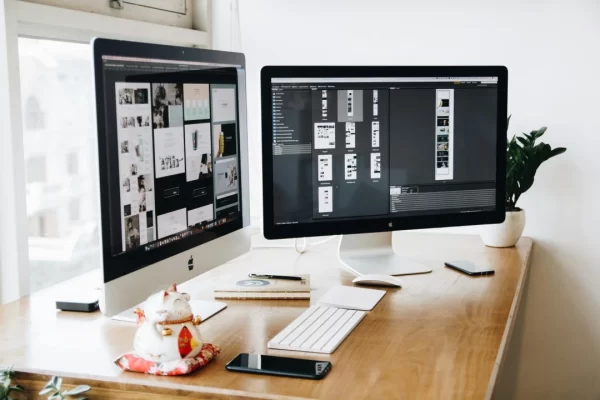As the digital landscape becomes increasingly visual, understanding various image formats is essential for designers, developers, and marketers. Selecting the right format can significantly impact image quality, file size, and website performance.
This guide explores the evolution of image formats, highlights key file types for 2024, compares their strengths and weaknesses, and offers best practices for optimising visuals across platforms.
The Evolution of Image Formats: Why It Matters
Image formats have evolved significantly, from early JPEGs and GIFs to modern formats like AVIF and WebP. Each format was designed to meet specific needs — whether to reduce file size, maintain image quality, or enable advanced features.
Why Understanding Image Formats Is Important
Choosing the right image format impacts:
- File Size: Efficient compression improves website speed.
- Visual Quality: Certain formats preserve fine details better than others.
- Compatibility: Ensuring your visuals appear correctly across devices is crucial.
- User Experience: Faster-loading images reduce bounce rates and improve engagement.
Mastering these aspects helps designers create stunning visuals while maintaining optimal performance.
Key Image Formats in 2024: What You Need to Know
In 2024, several image formats are making waves due to their performance benefits and advanced features.
JPEG 2000: Enhanced Compression and Clarity
- Pros: Superior compression with minimal quality loss; ideal for medical imaging, digital cinema, and archives.
- Cons: Limited browser support hinders web adoption.
WebP: The Web Performance Champion
- Pros: Offers excellent compression, transparency support, and animation capabilities.
- Best For: Web developers seeking to enhance page speed and user experience.
AVIF: Superior Quality with Smaller Files
- Pros: Based on AV1 video codec; offers exceptional compression and sharp image quality.
- Best For: Responsive web design, mobile optimisation, and performance-driven websites.
HEIF: The Multi-Image Powerhouse
- Pros: Stores multiple images, animations, and depth maps in a single file.
- Best For: Modern devices with advanced imaging capabilities.
PNG: The Trusted Classic
- Pros: Ideal for images requiring transparency or lossless compression.
- Best For: Icons, graphics, and designs requiring high-quality detail.
Comparing Image Formats: Strengths and Weaknesses
Choosing between image formats requires balancing quality, performance, and compatibility.
Compression Efficiency
- Best for Compression: WebP and AVIF reduce file sizes with minimal quality loss.
- Best for Detail Preservation: PNG excels in maintaining intricate visual details.
File Size Comparison
Smaller Files for Faster Loading: WebP and AVIF outperform JPEG and PNG in reducing file size without visual compromise.
Compatibility
- Widespread Support: JPEG and PNG are universally compatible.
- Limited Support: AVIF and HEIF may require fallback options for some browsers.
Best Practices for Image Format Selection
To optimise image quality and performance, follow these best practices:
1. Understand the Use Case
- For Photography: Use JPEG or AVIF for balance between quality and file size.
- For Transparent Graphics: Choose PNG or WebP.
- For Animations: WebP offers efficient file sizes with animation support.
2. Balance Quality and File Size
- Use newer formats like WebP and AVIF for smaller file sizes without compromising quality.
- For designs with intricate details, PNG’s lossless compression ensures accuracy.
3. Prioritise Browser Compatibility
- Use established formats like JPEG for broad compatibility.
- Implement fallback images when using WebP or AVIF to ensure all users see visuals correctly.
4. Optimise for Web Performance
- Compress large images with tools like TinyPNG or ImageOptim.
- Use lazy loading to improve page speed.
- Employ responsive design principles to deliver optimal images across devices.
5. Focus on Accessibility and SEO
- Add descriptive alt text and captions to improve search visibility.
- Use image sitemaps to help search engines index visuals efficiently.
6. Future-Proof Your Visuals
- Monitor emerging formats like JPEG XL for enhanced compression and improved HDR support.
- Stay updated with industry trends to adopt efficient technologies as they emerge.
Future Trends in Image Formats: What Lies Ahead
1. Emerging Formats for Immersive Media
Expect new formats tailored for augmented reality (AR), virtual reality (VR), and 3D content.
2. AI Integration in Image Optimisation
AI-driven compression tools are advancing, offering smarter ways to reduce file sizes without losing visual appeal.
3. Standardisation Efforts
Collaborative initiatives aim to streamline format compatibility across devices, improving accessibility and user experience.
FAQs About Understanding Your Image Formats
1. What’s the best format for website images?
WebP is highly recommended for websites due to its superior compression and broad browser support. For compatibility, provide JPEG or PNG as fallback options.
2. How can I reduce image file sizes without losing quality?
Use compression tools like TinyPNG, ImageOptim, or Squoosh. Choosing efficient formats like WebP or AVIF also helps reduce file sizes.
3. Is PNG better than JPEG for web use?
PNG excels in maintaining visual detail and supporting transparency. JPEG is preferred for compressing large photographs with minimal quality loss.
4. Should I switch from JPEG to AVIF or WebP?
Yes, if your platform supports AVIF or WebP, switching can improve load times while maintaining excellent image quality.
5. Which format is best for logos and icons?
SVG is ideal for logos and icons due to its scalability and ability to remain sharp at any resolution.
Conclusion: Enhance Visuals with Smart Format Choices
Understanding your image formats is crucial for ensuring optimal performance, visual quality, and accessibility. By mastering key formats like WebP, AVIF, and PNG, you can craft stunning digital experiences that captivate users while improving website speed.
Need expert guidance on image optimisation? Contact Digital Rescue today for tailored web solutions that boost performance and enhance your online presence.



